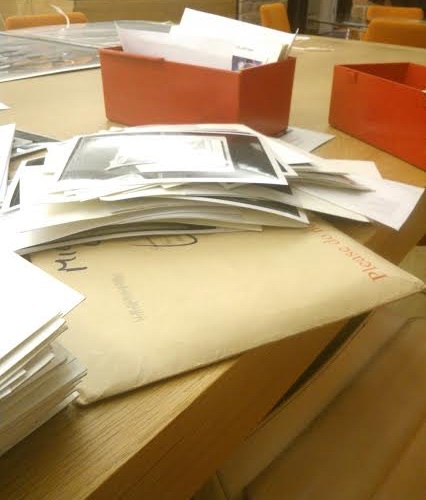For my placement for my MSc in Museum Studies at The University of Glasgow I am working to improve the catalogue entries for the cast collection at The Glasgow School of Art. This information will form a record of what the School possesses, and will also be added to a new online catalogue, due to launch later this year, which will include images alongside the descriptions. The catalogue entries are compiled from several sources: the pieces themselves; two box files of card catalogues with Polaroids from the 1970s, and information from the School’s archives.

Frustratingly until recently casts have been seen as the ‘poor relation’ of sculpture and art collections. According to one of the School tour guides, visitors have been surprised and disappointed to discover these are plaster copies and have often branded them ‘fakes’.
However, despite occasionally being considered a poor substitute for the real thing, the potential of casts should not be undervalued. In form they are virtually identical to the original sculpture and aesthetically could be said to provide the same experience of the original works.
A cast collection provides an opportunity to see world renowned works up close as well as creating an entirely unique experience. The sculptures and fragments of architecture displayed around the School’s campus come from all over Europe and the Middle East, making them accessible to all, not just those afforded with the ability to travel.
 But, why does Glasgow School of Art have a cast collection? Primarily they are an inheritance of the development of artistic training where in shops of established Masters students would make studies of replicas of classic Greek, Roman, and Renaissance originals. Antique sculpture was seen as one of the highest forms of art thus was one of the greatest mediums through which to study the subject.
But, why does Glasgow School of Art have a cast collection? Primarily they are an inheritance of the development of artistic training where in shops of established Masters students would make studies of replicas of classic Greek, Roman, and Renaissance originals. Antique sculpture was seen as one of the highest forms of art thus was one of the greatest mediums through which to study the subject.
After the establishment of art schools casts were used as models for the students to draw; from this they could study musculature structures and the forms of the body.
The School no longer uses these casts for official teaching, however students still draw from the casts in the corridors in their free time and casts are occasionally borrowed by Continuing Education classes to act as models. In the past few years efforts have been made to conserve, protect and document these pieces, in recognition of their unique importance both as works of art and in the history of art education at the School.
Guest post by Penelope Hines, MSc Museum Studies student placement, The University of Glasgow

